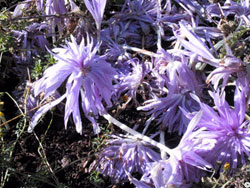Colchicum, sometimes called autumn crocus or meadow saffron, are members of the lily family (Colchicaceae) and bear flowers that resemble crocus.
The elongated corms should be planted in late summer. Position the tip of the corm two to four inches below the soil level. To protect flowers from soil that can be splashed up when it rains, plant corms under low-growing carpeting plants or in grass.

Generous clumps of leaves appear in spring and resemble a well-established tuft of daffodils. If you plant Colchicum in the lawn, allow the leaves to die down in early summer before you mow the grass.
Colchicum species worthy of note include rosy-purple flowering agrippinum, and speciosum, the showy autumn crocus, that bears tulip-like flowers. Showy crocus blooms are initially cream-colored and gradually darken to a rosy-purple. Many of them have been hybridized with Colchicum autumnale to produce superior flowers.
Excellent hybrid varieties include Autumn Queen with its deep violet flowers; The Giant, which has pinkish-mauve blooms on a white base; Waterlily, the double-flowering, lilac-colored variety; Lilac Wonder with its pinkish-lilac flowers; Conquest with its violet flowers; and Violet Queen, which has purplish-mauve flowers and a white center.
For gardeners who always rely on chrysanthemums and asters to carry the show in autumn, don’t overlook the beauty of Colchicums. Note – Colchicum are toxic to humans, especially the seeds and corms. Gloves should be worn when handling the corms to avoid possible skin irritations.
For more information on bulbs, see the following Colorado State University Extension Fact Sheet:



